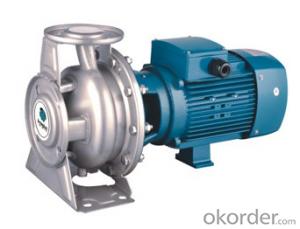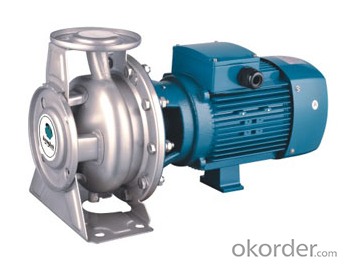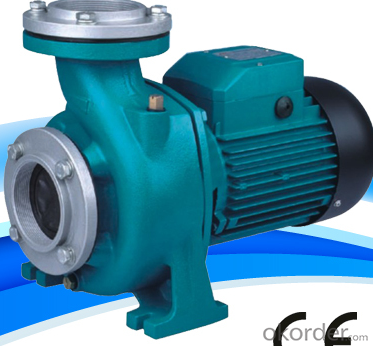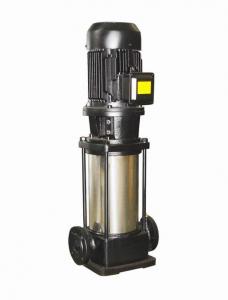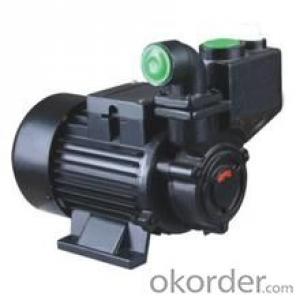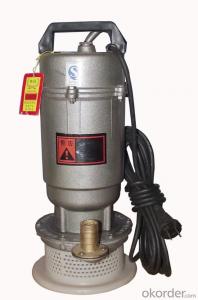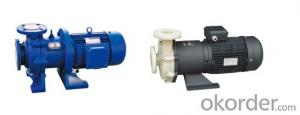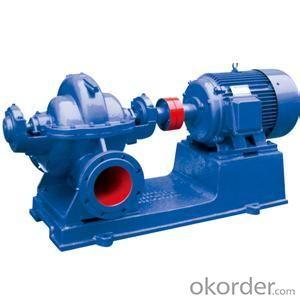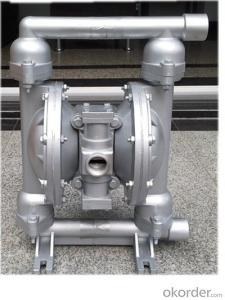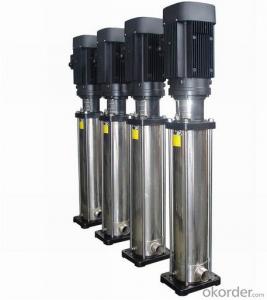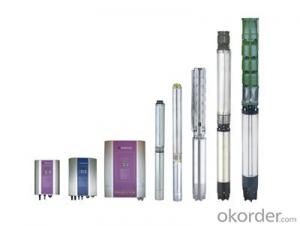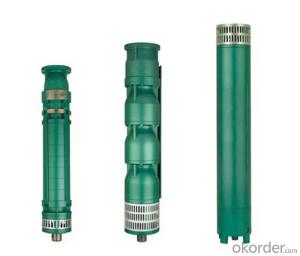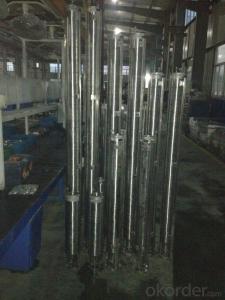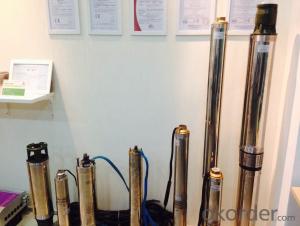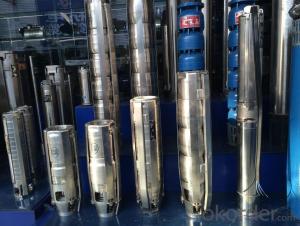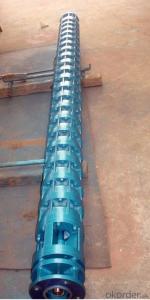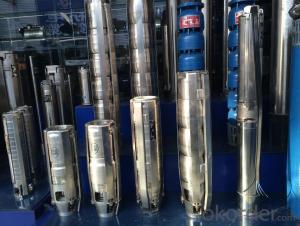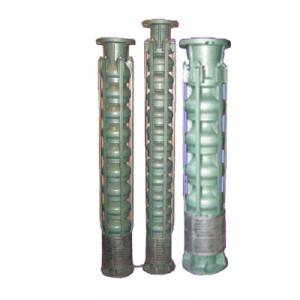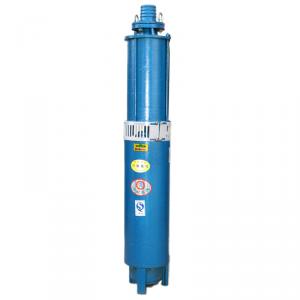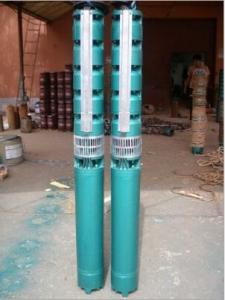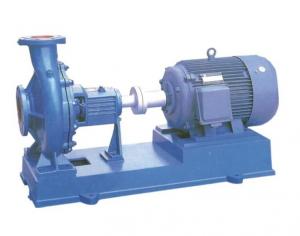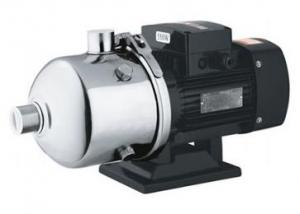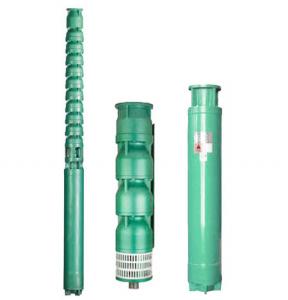Deep Well Pump Submersible Water Centrifugal Pump
- Loading Port:
- Shanghai
- Payment Terms:
- TT OR LC
- Min Order Qty:
- 1 set
- Supply Capability:
- 1000 set/month
OKorder Service Pledge
OKorder Financial Service
You Might Also Like
NF Deep Well Pump Submersible Water Centrifugal Pump
Applications
For water supply from wells or reservoirs.
For domestic use,for civil and industrial applications.
For garden use and irrigation.
Operating conditions
Maximum fluid temperature up to +40℃.
Maximum sand content:0.25%.
Motor and Pump
Rewindable motor
Three-phase:380V-415V/50Hz
Single-phase:220V-240V/50Hz
Options on request
Special mechanical seal
Other voltages or frequency 60Hz
* 100% Copper wire with overload protector
*Cold-rolled silicon steel sheet, with high-speed punching, improve the efficiency and precision.
*CNC precision automatic lathe for smoother shaft
*Anti-rust treatment castings and electrophoresis
* Automatic machine for spool wire and roll machine for tie wires .
Warranty:1 year
(according to our general sales conditions).
After Sales:
1).We are very glad that customer give us some suggestion for price and products.
2).If any question, please let us know it in the first by E-mail or Telephone. We can deal with them for you in time.
3).We will send many news styles in every week to our old customers.
We promise to:
Offer our customers the lowest prices.
Streamline the buying and paying processes.
- Q: I have had this water pump changed 2 times in 5 years is this normal for this car? It has a v6 motor.
- i wouldn't think that was normal, but what do i know? point being.....yea water pumps, in my experience, are pretty difficultly to change out....no average Joe could do it.
- Q: I cant get water to flow though the motor It seems like the pump isnt working any advise!
- Put the boat in forward, drop lower leg if pump is worn replace, be sure to pack it in petroleum jelly so it will not dry start.
- Q: There is a pump, the rated power is 1200W, but only more than 600 W measured!What's the matter, please?I was not measuring no-load, pumping water in the pool, this work environment should be sufficient to pump full load?Also, is the rated power should not change?Thank you
- Manufacturers in order to make money, the nameplate marked "1200W", in fact, the maximum power of the motor, only 750W.
- Q: Ok, so if i have an 80 watt solar panel and want to run a 12v dc fan and water pump ONLY when the sun is out or enough light to power them, will i need something like a voltage regulator? I would like to have the panels charge deep cycle 12 v batteries at the same time or when the fan and pump is not running. For instance, i have the panels out and my fan and pump on allowing them to run only on solar as well as charge the batteries. What diagram would i use? I would probably get a charge control for the batteries but more importantly what would i need to regulate the power from the panels? Inverter?
- You may have to do some math. The 80 watt panel is only 80 watts at peak sun on a 75°F day at the equator. Chances are you will have something less than 80 watts to work with. But you can add up all the hours of partial sun to get an equivalant number of peak sun hours. An example would be a few hours in the morning and evening at partial power and a couple of hours at solar noon at nearly full power may give you 5 peak sun hours worth of light. 5 psh x 80 w/ps = 400 wh Your supply may have 400 watt hours worth of power per day. You state that the fan is 12v dc but what is the wattage? It could be a little 12v dc fan out of a computer or it could be a huge 12v dc fan out of an RV. What is the power requirements of the water pump? Is it a little 12v dc one for a foot tall decorative fountain or an industial 3 phase pump for a well? To charge the battery you need a voltage 120% higher than the battery voltage. 12v x120%=14.4 v To add up your loads convert them all the use to dc watt hours per day Here is an example to give you an idea of how to play with your numbers: Fan 12vdc x 1.5 A = 18 watts, use this for 5 hours your load would be 18w x 5hr = 90 watt hours Pump 120 vac x 2.5 amps = 300 watts (The AC will need to come from an inverter. The inverter has a certain amount of loss. How good it does the job of converting dc to ac is know as it's efficency. Lets use 90% to be safe) 300 watts / 0.90 = 333.4 watts, use this for 1/2 hour per day 333.4w x 0.5hr = 166.7 watt hours The 90 watt hours + the 167 watt hours = 257 watt hours per day. This would leave about 140 watt hours to put into the battery. Yes it would be best to use a charge controller to protect the battery from overcharging if the pump and fan are off, or from draining the battery too much if the fan or pump stays on.
- Q: For a Dodge Ram 1500 pick-up. Not taking it to a mechanic.Already got the new pump. Got part of the engine off.Dont exactly have the right tools to make the job go fast but would like some tips on how to make it go faster..
- Honestly having the Chilton or Hayes repair manual will help greatly in understanding how it should all come apart. They run about $25.00 at you auto parts store. Having the proper tools will make the job go as smooth and quickly as possible. Most basic kits and be picked up at auto part stores for around 65.00 bucks. This is the best advice I can give a beginner who has just jumped right in there. Watch what you are taking apart and make sure that it is something that HAS to come off. There is no reason taking something out of the car if it's not going to help the project. When you picked up the water pump did you make sure to get too new radiator hoses? I will often replace the upper and lower hose when I do water pumps. Most likely they have been on there as long as the pump and it's time to change them. Not to mention now would be a great time to replace the thermostat on the engine as well to allow proper water flow through the engine. Also make sure you have the distilled water handy with the anti-freeze. Using distilled water keeps the radiator from becoming clogged with minerals that are normally found in your city water. It helps extend the life of your cooling system. I hope this helps. If you have any more questions feel free to E-mail me.
- Q: i want details and requirement of it in water pump
- Pump Foot Valve
- Q: my water pump went bad on my 1997 chevy cavalier, causing it to leak all the coolant it had in the system. i put water in it til i could get new water pump. changed out water pump. attempted getting air out of system. put more concentrated coolant in system than i did water. bad guessing on my part. ran car around block 5 times. it was fine. this morning on the way to work, it started overheating again. my thoughts : more air in system that's not coming out? thermostat REALLY went bad at same time as water pump???? overheating all because of a little too much coolant??? for some crazy reason, my system needs to be suddenly flushed? Your thoughts? one last thing, the car has always ran perfectly normal temp til water pump went bad.
- Maybe the hoses aren't connected properly and water is leaking out? Have you had the bonnet up to look at the engine while it's running to check for leaks? If you can't sort it out, take it to a garage
- Q: My car randomly decided to dump fluids the other day. Now, the engine overheats after 5 minutes of driving it and the check engine light comes on. I put more coolant in it and noticed it began to drip underneath the car. I'm hoping it's a leak but being my car is 10 years old and I've never replaced either the water pump or the head gasket I figure it's about due time unfortunately. About how much would this cost me to have done at the garage?
- It seems excessive to have to remove the engine to replace a head gasket. But I typically work on American cars, and I've seen the inside of an Altima, it is quite cramped. If I were you, I'd search google for replace head gasket procedure nissan altima and see what it comes back with.
- Q: I just bought a 1997 Honda Civic, done about 85k. There is no record of the timing belt having ever been changed so I want to get this done as a priority. My usual mechanic can't do it for a month due to other commitments so I have been ringing round for quotes, and generally these have all been to change the belt quot;plus the kit- which makes sense, change the lot while you are in there.Surprisingly, the cheapest quote I have had was from my local Honda dealer, however, they have said this is for the belt only as they don't change the tensioner/water pump on this model. Are they full of it? I'm not sure whether to take this as expertise from the car's manufacturer or total BS from some chancer trying to make money from us having to come back when other things go wrong!
- This is a hot topic even among Honda enthusiasts and professionals. The whole deal about changing the water pump, as you probably know, is that the labor to do that is small once the timing belt is out of the way. However - and this is the big issue - most original Honda water pumps last a very long time, even more than 200K miles. Do you feel lucky? One big issue enters here: what sort of antifreeze has been used in it? If it still has Honda antifreeze (dark green in your 1997, as I recall) the pump is probably still good for another 100K miles even if the coolant has not been changed on schedule. If it has conventional (bright) green or some other coolant that is not known to be silicate free I strongly recommend replacing the pump with an OEM pump. See the first source for the reason. In any case, I recommend replacing the water pump with the next timing belt change if you don't do it this time. 300K miles is a lot to ask of a pump seal. I also strongly recommend not going with an aftermarket pump - OEM only. I make a habit of always replacing the pump and tensioner(s). EDIT - Shane A has a good point. If the water pump fails next year the price of a new pump and tensioner will seem trivial. The pain of higher cost is temporary, the peace of mind is lasting.
- Q: I had high-pitch noise coming from my engine; it was coming from the belt area. I change the belts but the noise is still happening. After doing some research, I noticed that the noise is coming from the Water pump bearings. I installed this water pump Last year and the warranty is expired on it. A friend told me that if a bearing goes bad on a Water pump, then I should flush the cooling system because it leaves metal shavings into the engine. Is this true? I already flushed my cooling system at the mechanic (he has a special machine) about 2 weeks ago. Is it necessary to do another flush because of bad Water Pump bearings?
- in the first place find out why the pump went out so fast, it might be the belt is too tight or you got hold of a cheap pump.
Send your message to us
Deep Well Pump Submersible Water Centrifugal Pump
- Loading Port:
- Shanghai
- Payment Terms:
- TT OR LC
- Min Order Qty:
- 1 set
- Supply Capability:
- 1000 set/month
OKorder Service Pledge
OKorder Financial Service
Similar products
Hot products
Hot Searches
Related keywords
